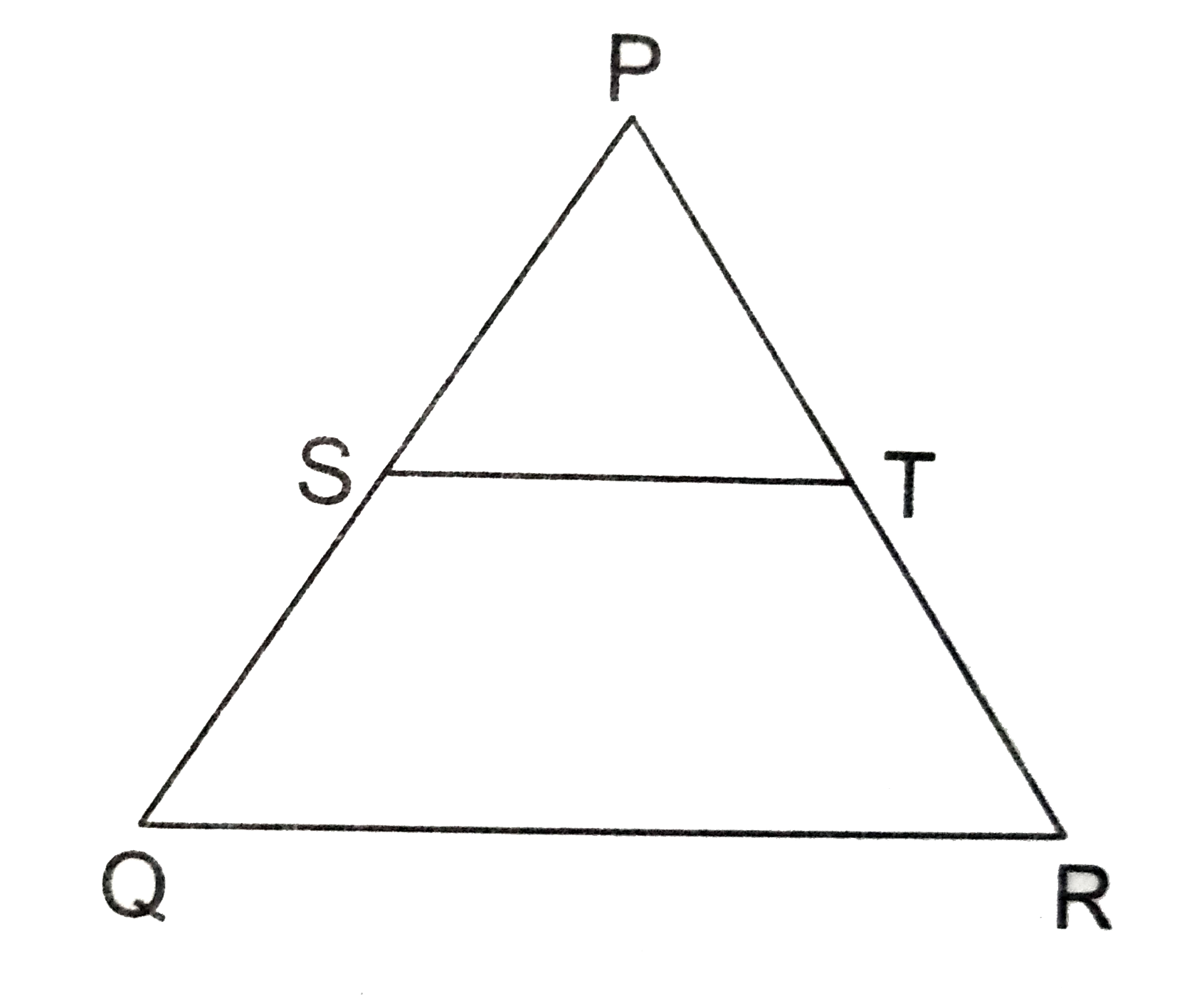PQR is a triangle. S and T are the midpoints of the sides PQ and PR respectively. Which of the following is TRUE?
I. Triangle PST is similar to triangle PQR.
II. ST = 1/2(QR)
III. ST is parallel to QR. / ST, QR
Only I and II
Only II and III
Only I and III
All I, II and III
To solve the problem, we will analyze the triangle PQR and the midpoints S and T of sides PQ and PR respectively. We will verify each of the statements provided.
1. Identify the Triangle and Midpoints:
- Let triangle PQR be defined with points P, Q, and R.
- Let S be the midpoint of side PQ.
- Let T be the midpoint of side PR.
2. Apply the Midpoint Theorem:
- According to the Midpoint Theorem, if S and T are midpoints of sides PQ and PR respectively, then the line segment ST is parallel to the third side QR and ST is half the length of QR.
- Therefore, we can conclude:
- Statement III: ST is parallel to QR (True).
- Statement II: ST = 1/2(QR) (True).
3. Check for Similarity of Triangles:
- Since ST is parallel to QR, triangle PST is similar to triangle PQR by the Basic Proportionality Theorem (also known as Thales' theorem).
- This means that the angles of triangle PST correspond to the angles of triangle PQR.
- Therefore, we can conclude:
- Statement I: Triangle PST is similar to triangle PQR (True).
4. Conclusion:
- All three statements are true:
- I. Triangle PST is similar to triangle PQR.
- II. ST = 1/2(QR).
- III. ST is parallel to QR.
Final Answer:
All statements (I, II, and III) are true.
---
- Let triangle PQR be defined with points P, Q, and R.
- Let S be the midpoint of side PQ.
- Let T be the midpoint of side PR.
- According to the Midpoint Theorem, if S and T are midpoints of sides PQ and PR respectively, then the line segment ST is parallel to the third side QR and ST is half the length of QR.
- Therefore, we can conclude:
- Statement III: ST is parallel to QR (True).
- Statement II: ST = 1/2(QR) (True).
- Since ST is parallel to QR, triangle PST is similar to triangle PQR by the Basic Proportionality Theorem (also known as Thales' theorem).
- This means that the angles of triangle PST correspond to the angles of triangle PQR.
- Therefore, we can conclude:
- Statement I: Triangle PST is similar to triangle PQR (True).
- All three statements are true:
- I. Triangle PST is similar to triangle PQR.
- II. ST = 1/2(QR).
- III. ST is parallel to QR.
All statements (I, II, and III) are true.
Topper's Solved these Questions
Similar Questions
PQR is a triangle right-angled at Q. If X and Y are the mid-points of the sides PQ and QR respectively, then which one of the following is not correct?
View SolutionPQR is a triangle such that PQ = PR. RS and QT are the median to the sides PQ and PR respectively. If the medians RS and QT intersect at right angle, then what is the value of (PQ/QR)2?
View Solution
Knowledge Check
PQRis a triangle such that PQ=PR.RSand QT are the medians to the sides PQandPR respectively. If the medians RS and GT intersect at right angle, then what is the value of (PQQR)2 ?
A32B52C2DNone of thesePQRS is a rectangle, A, B, C and D are the mid points of sides PQ, QR, RS and PS respectively. If area of ΔPQR is 48 cm2, then what is the area (in cm2) of ΔBCD?
A24B6C16D12In a triangle PQR, PQ = 20 cm and PR = 6 cm, the side QR is :
Aequal to 14 cmBless than 14 cmCgreater than 14 cmDnone of these
In a triangle PQR , ST is a parallel to QR, .Show that RT(PQ+PS)=SQ(PR+PT).

View SolutionPQR is a triangle right angled at P. If PQ=10cmandPR=24cm, find QR
View SolutionS and T are points on the sides PQ and PR, respectively of ΔPQR, such that PT = 2 cm, TR = 4 cm and ST is parallel to QR. Find the ratio of the areas of ΔPST and ΔPQR.
View SolutionIn the adjoining figure, S and T are points on the sides PQ and PR respectively of ΔPQR such that PT=2cm,TR=4cmandST is parallel to QR. Find the ratio of the ares ofΔPSTandΔPQR.

View SolutionIn a triangle PQR, PQ=20 cm and PR =6 cm, the side QR is :
View Solution
